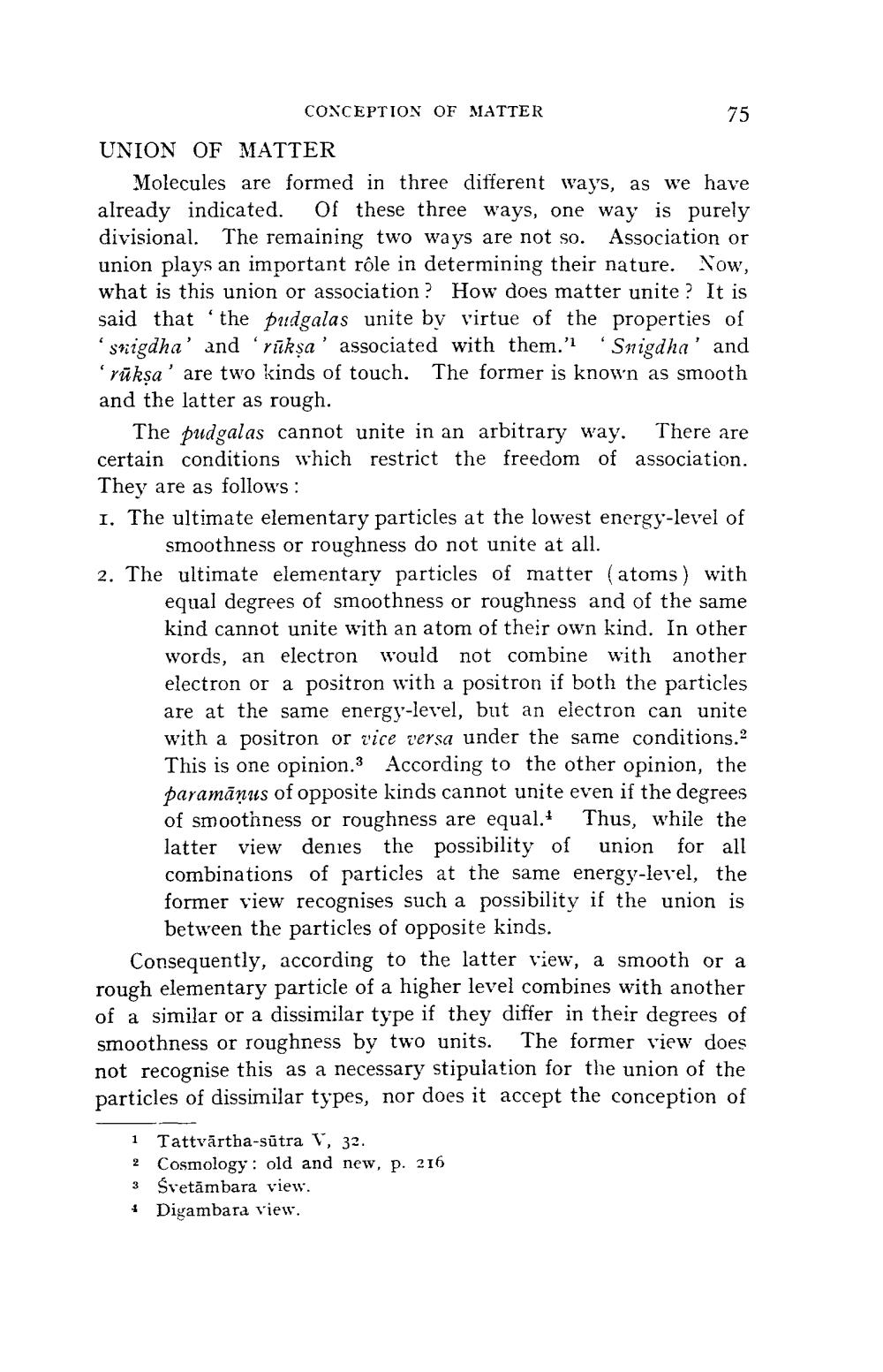________________
COXCEPTION OF MATTER
75
UNION OF MATTER
Molecules are formed in three different ways, as we have already indicated. Of these three ways, one way is purely divisional. The remaining two ways are not so. Association or union plays an important rôle in determining their nature. Now, what is this union or association? How does matter unite? It is said that the pudgalas unite by virtue of the properties of snigdha' and 'riksa' associated with them.' 'Snigdha' and rūksa' are two kinds of touch. The former is known as smooth and the latter as rough.
The pudgalas cannot unite in an arbitrary way. There are certain conditions which restrict the freedom of association. They are as follows: 1. The ultimate elementary particles at the lowest energy-level of
smoothness or roughness do not unite at all. 2. The ultimate elementary particles of matter (atoms) with
equal degrees of smoothness or roughness and of the same kind cannot unite with an atom of their own kind. In other words, an electron would not combine with another electron or a positron with a positron if both the particles are at the same energy-level, but an electron can unite with a positron or vice versa under the same conditions. This is one opinion. According to the other opinion, the paramāņus of opposite kinds cannot unite even if the degrees of smoothness or roughness are equal. Thus, while the latter view denies the possibility of union for all combinations of particles at the same energy-level, the former view recognises such a possibility if the union is
between the particles of opposite kinds. Consequently, according to the latter view, a smooth or a rough elementary particle of a higher level combines with another of a similar or a dissimilar type if they differ in their degrees of smoothness or roughness by two units. The former view does not recognise this as a necessary stipulation for the union of the particles of dissimilar types, nor does it accept the conception of
1 Tattvārtha-sūtra V, 32. 2 Cosmology: old and new, p. 216 3 Svetāmbara view. · Digambara view.




